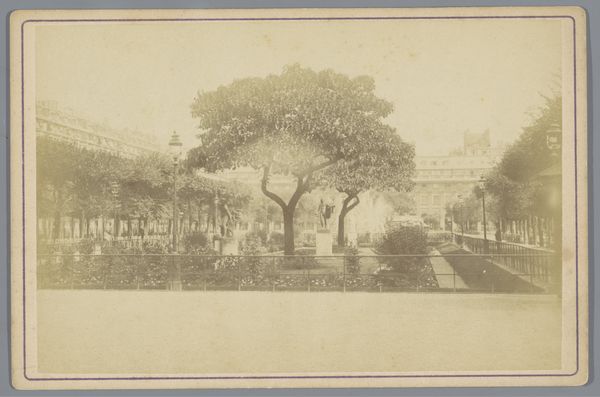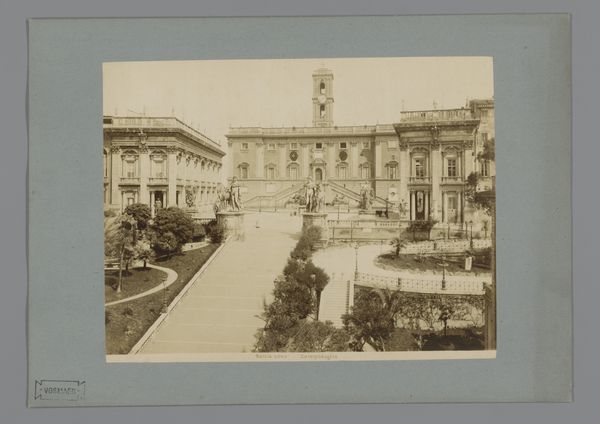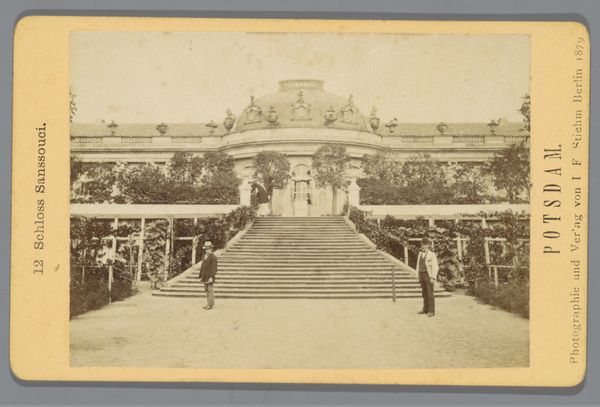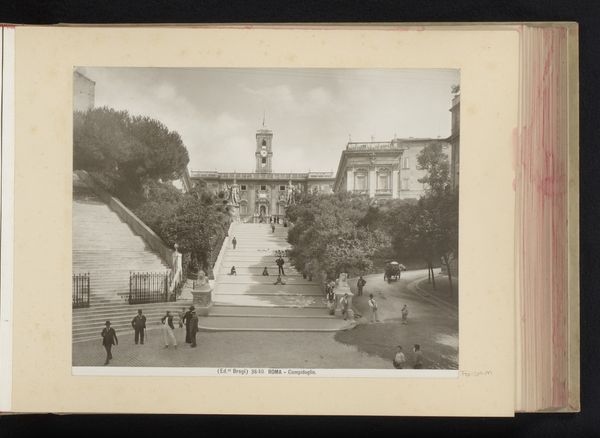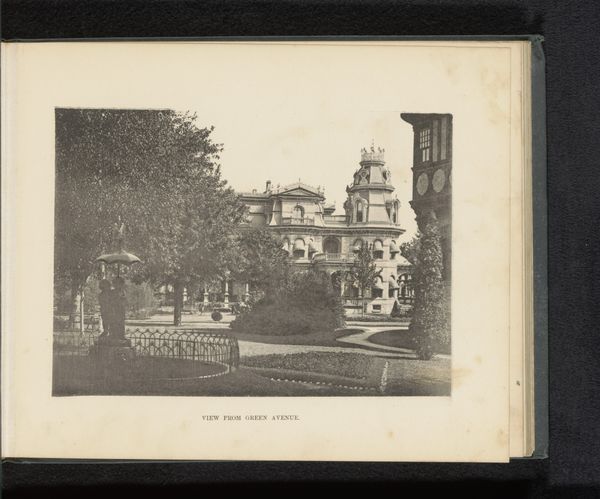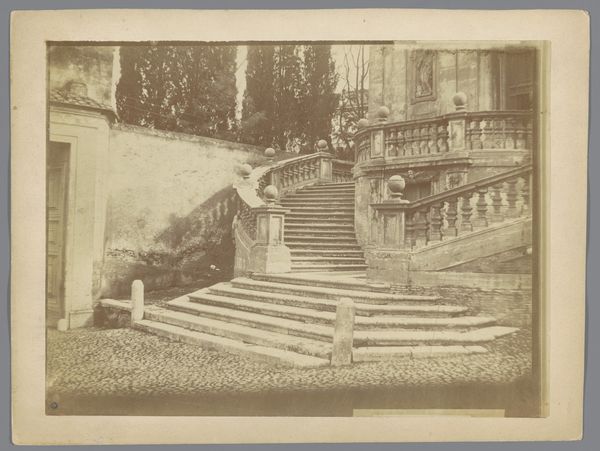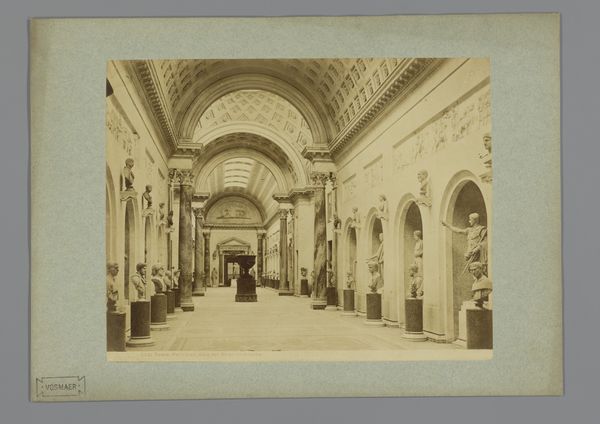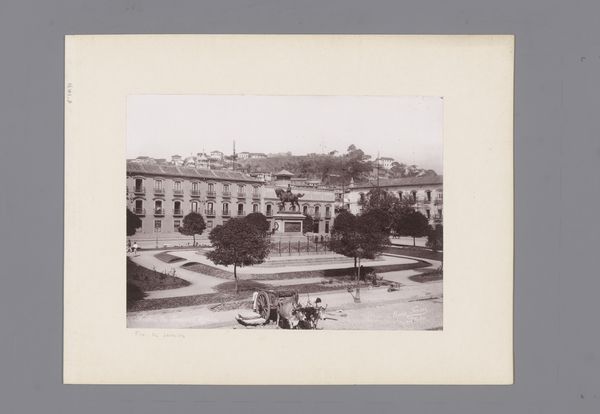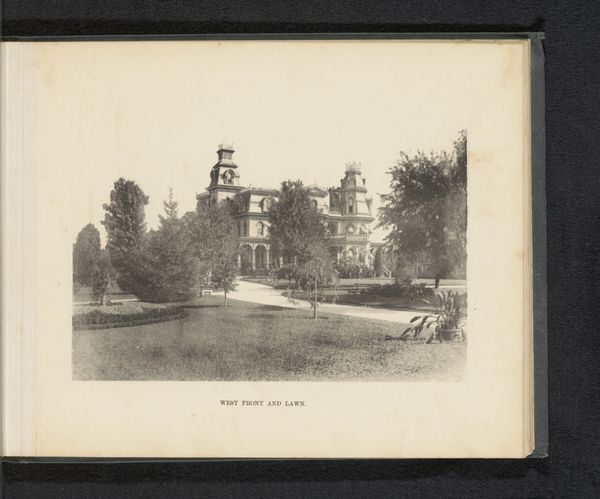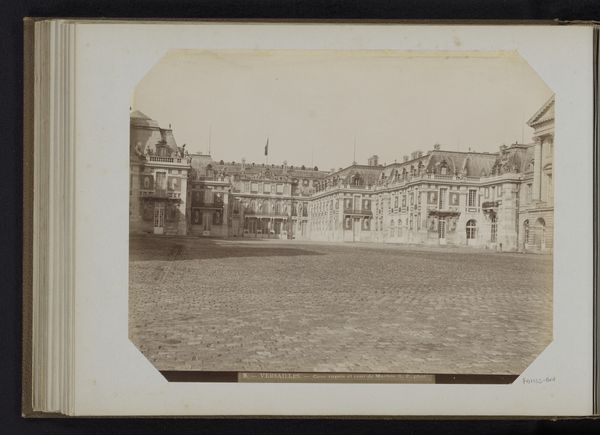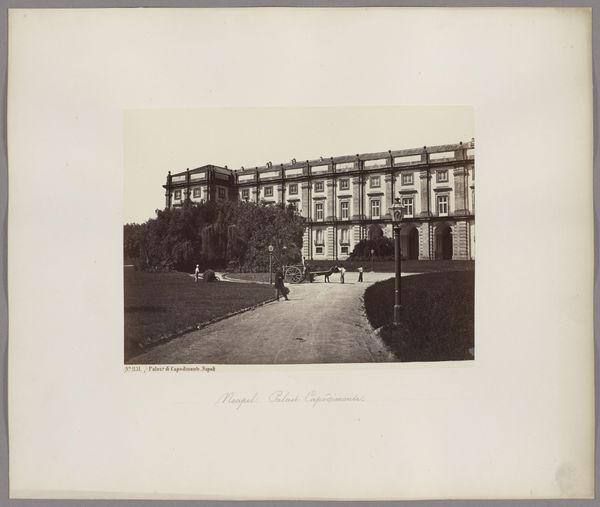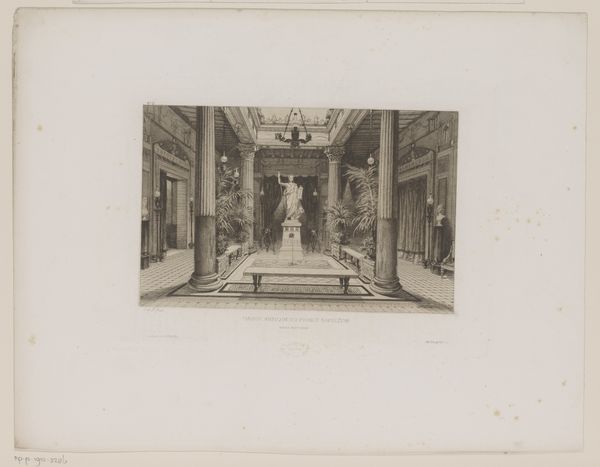
Trappen naar het Senatorenpaleis op het Capitool te Rome, Italië 1852 - 1900
0:00
0:00
Dimensions: height 106 mm, width 139 mm, height 168 mm, width 223 mm
Copyright: Rijks Museum: Open Domain
Curator: This gelatin silver print, "Trappen naar het Senatorenpaleis op het Capitool te Rome, Italië", was captured sometime between 1852 and 1900 by Fratelli Alinari. Editor: It has such a strikingly formal and almost reverential feel. The linear perspective draws you right into the heart of the image, to the building dominating the top of the stairs, emphasizing power. Curator: Absolutely. And it's vital to remember the Capitoline Hill's significance throughout history. The Senate Palace represented civil authority since ancient Roman times, and even through the Renaissance, the space embodies power dynamics. Editor: In visualizing power, notice that even the carefully manicured gardens play a role in constructing the cityscape. I wonder if we should reflect on who and who doesn't feel welcome on this public staircase. It all contributes to the reading of accessibility, not just of space, but of the governing power of Rome itself. Curator: Indeed, and Alinari, as a commercial firm producing images for a growing tourist market, capitalized on this symbolism. These pictures were often used to validate a certain idealized vision of Italian heritage. Neoclassicism was popular and this view highlights Rome's cultural capital, subtly suggesting Italian cultural and political dominance. Editor: The near absence of people in the shot feels very deliberate, further emphasizing that structure as a center, rather than civic life or participation. What narrative were they pushing forward by depicting such a scene this way? What did it mean to document that building, to create the image we are observing, as an act of power itself? Curator: Exactly. Fratelli Alinari provided a product reflecting an elite and established order. Analyzing the viewpoint is fundamental. Whose Rome is visible and promoted? Thinking intersectionally pushes to reveal biases in its production. Editor: So true. Looking at this artwork challenges us to ask essential questions about representation, historical context, and visual power. I have no doubt we will now examine these buildings from other angles, understanding them through these lens. Curator: Analyzing this photography has only reaffirmed how historical context frames an artistic viewpoint, influencing not just artistic production but the societal understanding it forms.
Comments
No comments
Be the first to comment and join the conversation on the ultimate creative platform.
